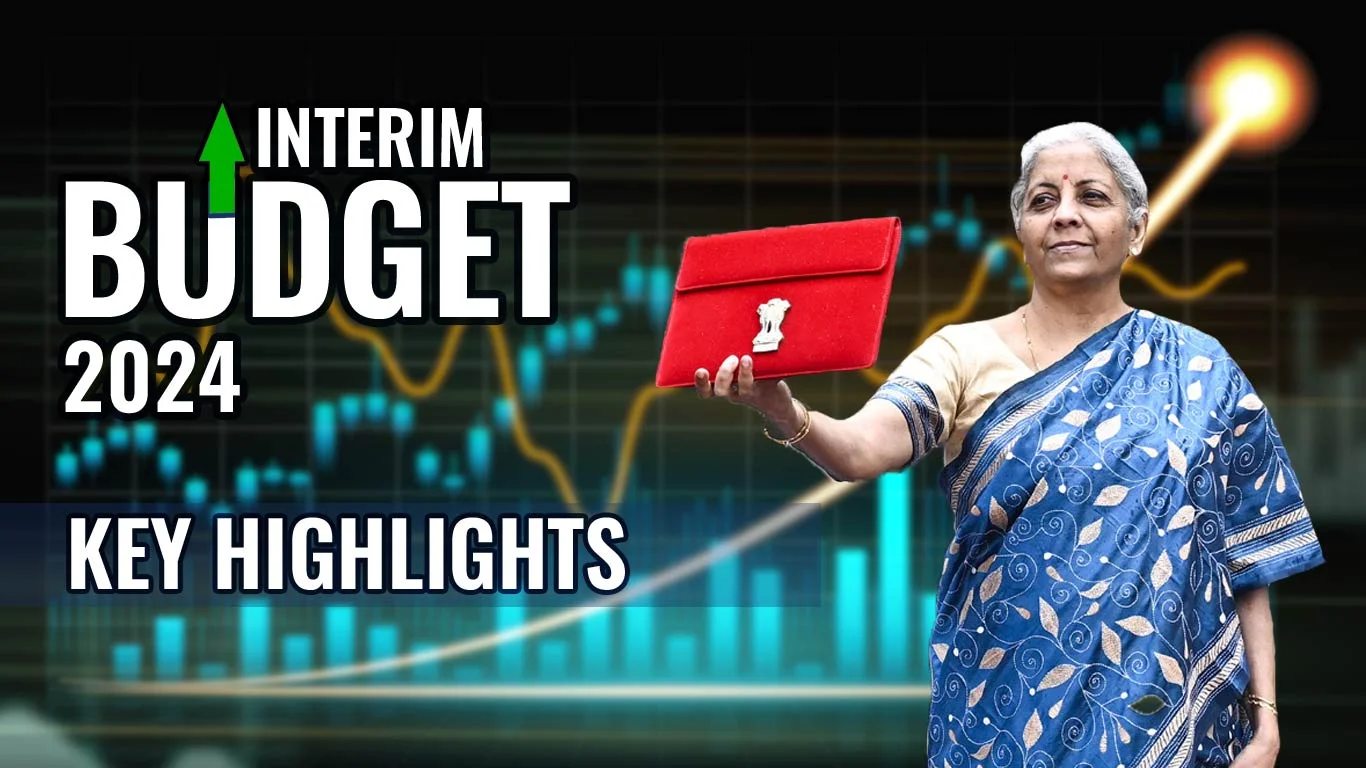On February 1, Finance Minister Nirmala Sitharaman presented the interim budget 2024 that focused on fiscal consolidation, infrastructure, agriculture, green growth, and railways. This was her sixth budget presented in the Lok Sabha.
The interim Union Budget speech made by Nirmala Sitharaman was well suited for an election year, projecting a rear-view reflection of the Modi government’s record of “Governance, Development and Performance (GDP)”, as claimed in her own words.
The Interim Budget 2024 outlines the fiscal roadmap for the country until a full budget is introduced in July 2024.
Here are the key highlights of the Interim Union Budget 2024 and its potential impact on the overall economic growth.
1. Economic Growth
Building on the massive tripling of the capital expenditure outlay in the past 4 years resulting in a huge multiplier impact on economic growth and employment creation, the outlay for the next year is being increased by 11.1 percent to 11.11 lakh crore, announced the FM. This is 3.4 percent of the GDP.
2. Boosting infrastructure development
Continuing its impetus on infrastructure development as an imperative to achieve its ambition of ‘Viksit Bharat’, the Government has allocated substantial funds for the construction of highways, railways, airports, and advancement of other critical infrastructure development projects. Acknowledging that the infrastructure sector is the backbone of the economy, this investment is expected to create new business opportunities, enhance connectivity, and stimulate economic growth.
3. Focus on Research and Development
Recognising the importance of innovation and technology, the Interim Budget 2024 allocates significant funds for research and development (R&D) initiatives. This move is expected to foster innovation, enhance competitiveness, and incentivize the private sector to substantially enhance research and innovation efforts and drive growth in sectors such as technology, pharmaceuticals, and manufacturing.
- Reduction in fiscal deficit
Fiscal deficit essentially shows the amount of money that the government borrows from the market. It does so to bridge the gap between its expenses and income. Fiscal deficit is the most-watched variable, because if a government borrows more, it leaves a smaller pool of money for the private sector to borrow from. That, in turn, leads to higher interest rates, and further dragging down economic activity in the form of lower consumption and production. If the government tries to print more money instead of borrowing from the market, that too leads to negative effects such as inflation. Retiring old debt eventually requires governments to tax its citizens, which, again, drags down economic activity.
It is for this reason that the Fiscal Responsibility and Budget Management Act of 2003 requires the Union government to contain its fiscal deficit to just 3% of the nominal GDP. However, barring 2007-08, India has never met this target.
The deficit had worsened in the wake of the Covid pandemic — shot up to 9.2% of GDP — but since then the government has been able to bring it down each year. In the current year, the government had set a target of 5.9% and revised estimates show it is likely to be even lower at 5.8%. Further, the FM has announced similarly ambitious targets for FY25 — at 5.1% of GDP— and FY26 — at 4.5% of GDP.
This is a welcome achievement because it is likely to bring down the cost of borrowing for the private sector.
5. Skill Development and Education
Continuing with the focus on the empowerment of the youth, the budget places a strong emphasis on skill development and education, recognising the role of a skilled workforce in driving economic growth. The Government has allocated funds to enhance vocational training programmes, promote digital literacy, and establish centres of excellence.
6. Sustainable Development and Green Initiatives
In line with global sustainability goals and its commitment to meet the net zero commitments, the Interim Union Budget 2024 emphasises sustainable development and green initiatives. The Government has allocated funds for renewable energy projects, waste management, and pollution control measures.
7. Tax proposals
While the Finance Minister did not propose any significant changes relating to taxation, she announced that over the last 10 years, tax collections have more than doubled. There were announcements on the extension of sunset dates for certain tax benefits to start-ups, investments made by sovereign wealth funds/pension funds and some International Financial Services centre units from 1st April 2024 to 31st March 2025. On the other hand, the sunset date of 31 March 2024 applicable for claim of concessional tax rate by a new domestic manufacturing company has not received any extension.
The provisions relating to Tax Collection at Source on remittance under the ‘Liberalised Remittance Scheme’ and payment for overseas tour program package have been rationalised.
- Solarization Scheme
Through roof-top solarize pannels, 10 million households will be enabled to obtain up to 300 units of free electricity every month. This scheme follows the resolve of the Prime Minister on the historic day of the consecration of Shri Ram Mandir in Ayodhya, said FM Nirmala Sitharaman.
- GST
On the GST front, continuing its focus to encourage voluntary compliances / registrations, input Service Distributor mechanism has been made mandatory for distribution of input tax credit, and penalty provisions are proposed to be introduced for failure to register certain machines used in manufacture of specified tobacco-based goods.
10 Income Tax is biggest income generator
Traditionally, the biggest chunk in the government’s financial resources comes from market borrowings. Among the genuine income generators, it is the indirect taxes and the corporate tax that provide the most money. But budget estimates for the next financial years show that income tax collections will be the top contributor (after borrowings).
The Budget documents suggest that income tax revenues will account for 19% of all government resources in FY25. Corporate tax will account for 17%, GST for 18% and borrowings for 28%.
All in all, the Interim Union Budget 2024 sets a positive tone, with its focus on infrastructure development, research and development, skill development, and sustainable initiatives.

